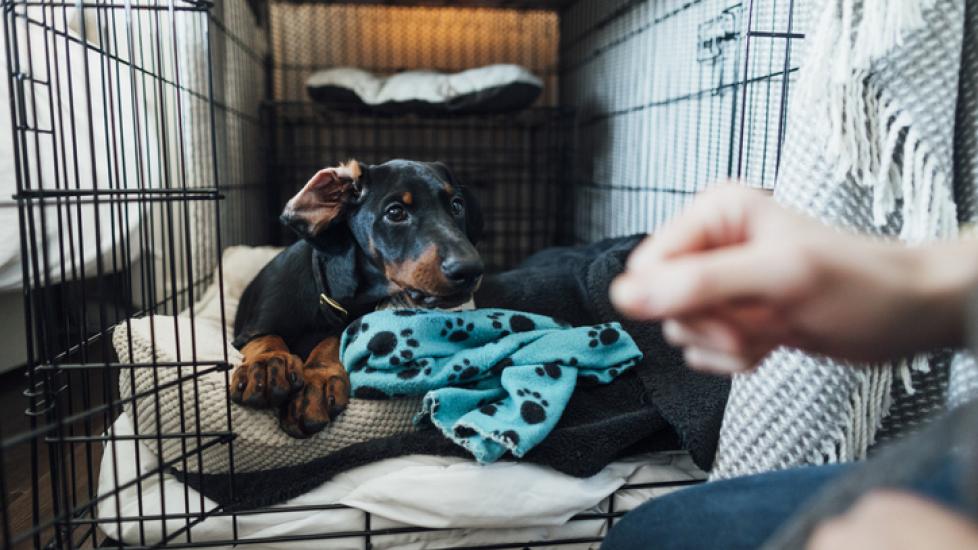Crating your new puppy is an essential part of raising them well. Not only does it provide safety for both you and the pup, but it also helps with house training and creates a cozy space that’s all their own. Here’s how to crate train effectively:
Step 1: Choose the Right Crate
Select a crate that’s appropriate for your dog’s size—it should be just big enough for them to stand up, turn around, and lie down comfortably. A crate that’s too large can be overwhelming and may encourage potty accidents in the corners. If you have multiple dogs or plan on getting another one soon, consider a multi-level or expandable crate.
Step 2: Introduce Your Puppy to the Crate
Start by showing your puppy the crate without forcing them inside. Use treats and praise as positive reinforcement when they sniff or explore the area. Once they seem comfortable, place high-value treats near the entrance to lure them closer. Gradually move the treats further into the crate until they are willing to step inside.
Step 3: Make It Their Den
Once your puppy has entered the crate willingly, leave them there briefly with a treat and some soft bedding. Praise them loudly when they stay quietly, and never force them out if they whine or bark; this will only make the crate seem like a negative place. After a few minutes, let them out and give them time outside the crate before repeating the process.
Step 4: Encourage Napping in the Crate
Use quiet times, such as during meal prep or after play sessions, to suggest naps in the crate. Place your puppy in the crate with a favorite toy or blanket and use soothing words and maybe some light classical music. As they fall asleep, give them lots of verbal encouragement.
Step 5: Build Trust Through Positive Reinforcement
Always associate the crate with good things. Never scold your puppy for crying in the crate, but rather wait patiently nearby. They will learn that whining doesn’t get them what they want (immediate release) and that being calm gets them what they do want (your presence and treats).
Step 6: Set Clear Expectations
Be consistent with commands like “kennel” or “crate” so your puppy knows exactly what you expect from them. Reward any attempt at compliance with treats and affection. You might even find success by placing treats directly over the door latch—puppies love puzzles!
Step 7: Practice Outside the Home
When you feel confident about your puppy’s progress at home, start practicing in different environments where they might need to be crated, such as friends’ houses or on car trips. This exposure will help them adapt better to changes later in life.
Remember, patience and consistency are key. Every puppy is unique, and some may take longer than others to become accustomed to the crate. By following these steps, however, you’re setting yourself and your furry friend up for a lifetime of safe adventures together!
